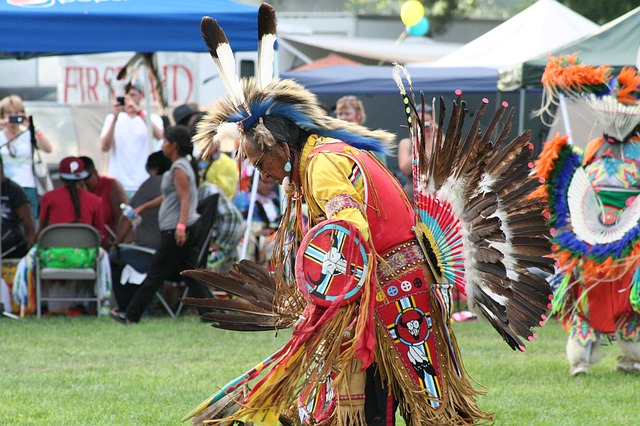
Raise your hand if you ever dressed up as an “Indian” as a child, were told to sit “Indian style,” have spoken about having a pow wow or mimicked the noises of a Native American by yelling a rhythmic tribal outcry with your hand patting your mouth.
Admittedly, this was the way I grew up. In fact, I was a cheerleader for a Pop-Warner football team called the Armijo Indians. You can only imagine the cheers that I memorized that involved stereotypical chants.
As a parent, I tend to share with my kids what I enjoyed as a child. I absolutely LOVED reading the Little House on the Prairie series written by Laura Ingalls-Wilder. So naturally, I bought the series and began reading it to my son. He loved the adventure, the idea of building something from nothing, hunting, and the hard work that went into survival in these books. What I did not remember was the number of times the indigenous people of America were referred to as savages. Ma (Caroline Ingalls) did not refrain from stating what she thought about this people group; my husband and I found ourselves editing as we read—editing a lot.
Thankfully, times have changed and certain behaviors and references that were the norm have been challenged and proven harmful with our ever-growing and improving knowledge of cultural sensitivities.
Honoring the Truth
In this day and age, it is important to honor truth. The truth is, there were indigenous people living in the Americas before anyone from Spain or elsewhere in Europe arrived. Those indigenous people were not treated well (to put it mildly), and here we are as America. I cannot change the past, but I can tell my children this historical truth and honor our present. I also cannot gloss over our nation’s Thanksgiving holiday with cute cartoons adorned with birds tweeting above a peaceful meal between pilgrims and indigenous people.
As a parent and a teacher, long gone are the days of having kids create Native American clothing from brown paper bags or headdresses from construction paper. I will not have my students reenact a feast with students wearing paper pilgrim hats and dickies sitting across from a student dressed as an “Indian” eating turkey and corn.
Why?
Because to have children wear regalia (They are not costumes!) is not honorable. Certain headdresses and masks were only worn by those who had gained a certain level of respect in a tribe. To participate in a dance was something that was set aside for certain ceremonies, not to be mimicked and dishonored by people who do not understand the significance behind it. Just as we now know that dressing as Indigenous people at Halloween minimizes their cultural traditions, we must also be aware of how we represent Thanksgiving. We may not intend to dishonor the indigenous cultures, but we do inadvertently when we have children participate in Thanksgiving with dress up clothes. We undermine the honor of our indigenous people who still exist today.
What can we do instead?
Honor the hard work that went into surviving as an indigenous people.
Gather natural resources such as sticks and twigs to see how much work went into building a home. Or instead of making Ohlone necklaces, how about we have students see the hard work that is put into making jewelry by collecting nature and turning it into jewelry of any kind. And speaking of the Ohlone (or Costanoans), study the local tribes that existed here in the Bay Area! What a treat to visit places such as these.
We can also talk about different regions, weather patterns, and indigenous animals that exist across America. These environmental factors influence the thousands of tribes and how they live today. Too often Native Americans can be lumped into one way of thinking or one way of being when they can be as different as people from Kenya and Denmark. Each tribe or community is unique and we can honor this by breaking the stereotypical comments around indigenous people.
And, last but not least, speak of these beautiful people existing today. They do. Their tribes and cultures are alive. They are not dead, they are not only in the past but here in the present. They are not historical but current. My daughter still asks me, “Mom, are Native Americans alive today?” I tell her yes over and over again. I gently remind her that when we visited Antelope Canyon in Arizona that the tour guides were indigenous people. She seemed shocked at first. You see, in her world, she has only known of “Indians” from the past, wearing regalia, not normal street clothes. She had the misunderstanding that they were historical, not present. It has taken many years (two since we visited the reservation) for her to realize this truth.
Here’s what I hope.
My hope is that my daughter will not only understand their present existence but appreciate the diversity among all tribes across the United States. She sits criss-cross applesauce, has never dressed up as a Native American, and my guess is that she won’t cheer for a team with the mascot of an “Indian.” We are headed in the right direction.
As you sit at your Thanksgiving table with your loved ones, please love them enough to talk about Thanksgiving not only from a colonial perspective but from a perspective of a people group that was indigenous to our country and still exist today.















